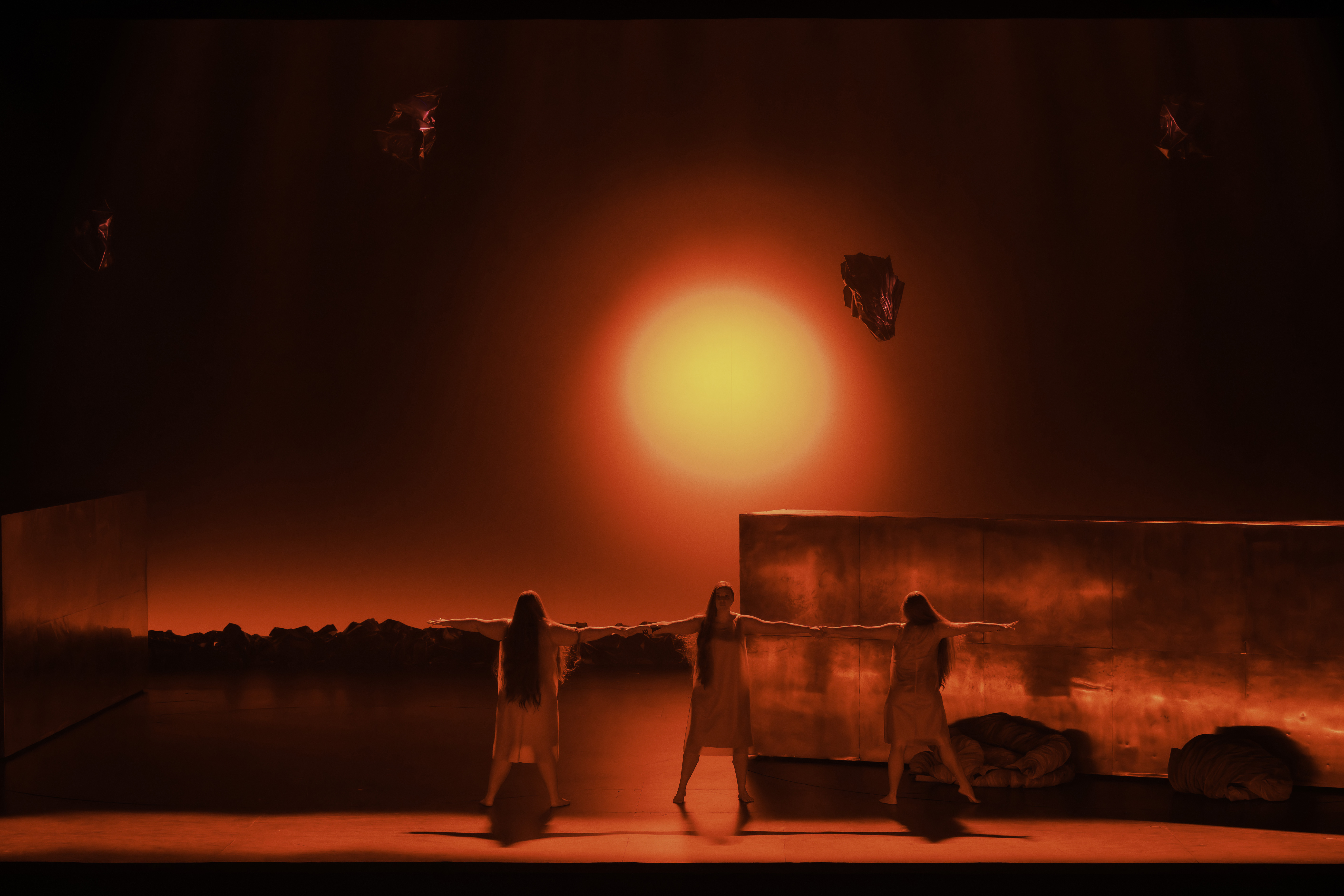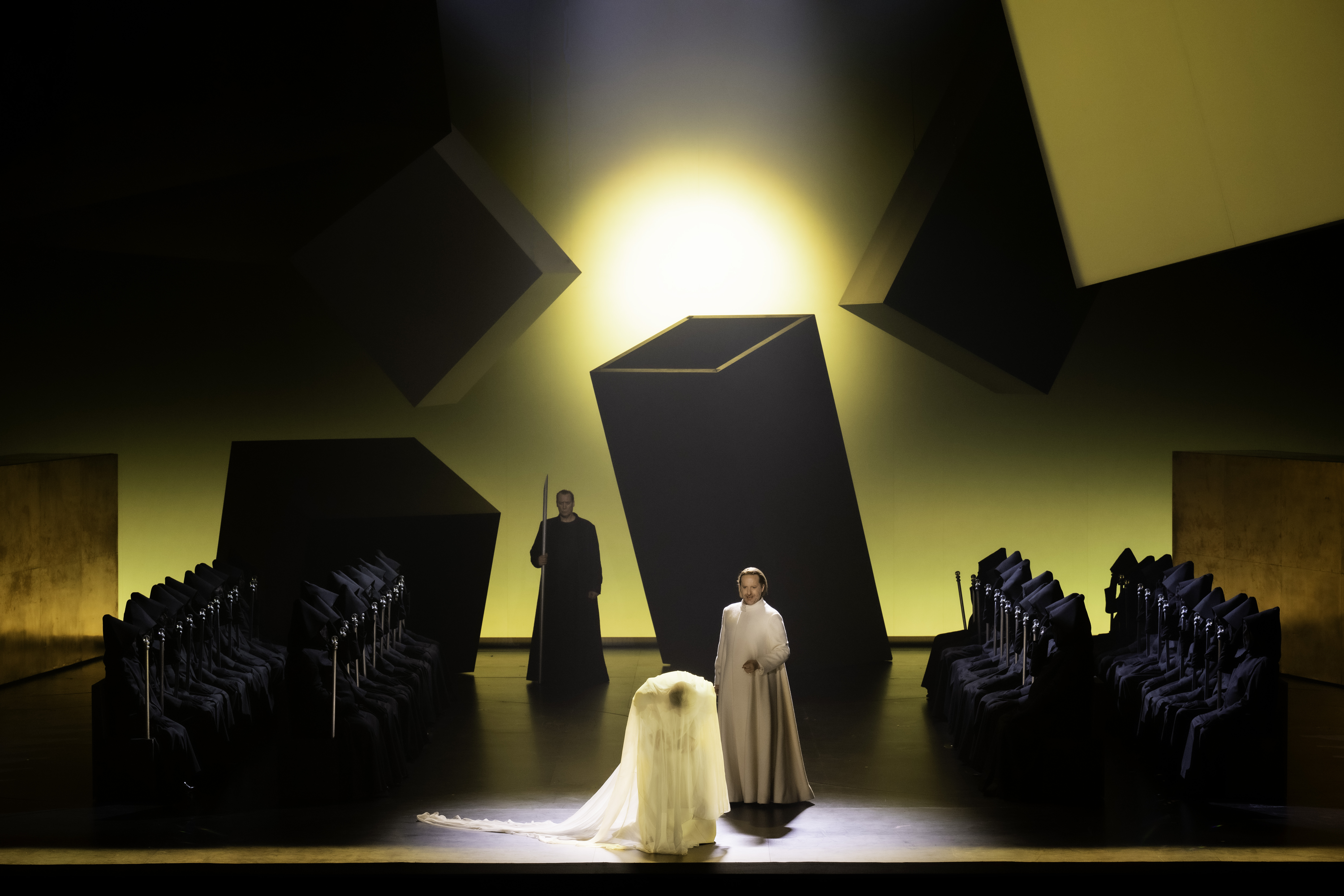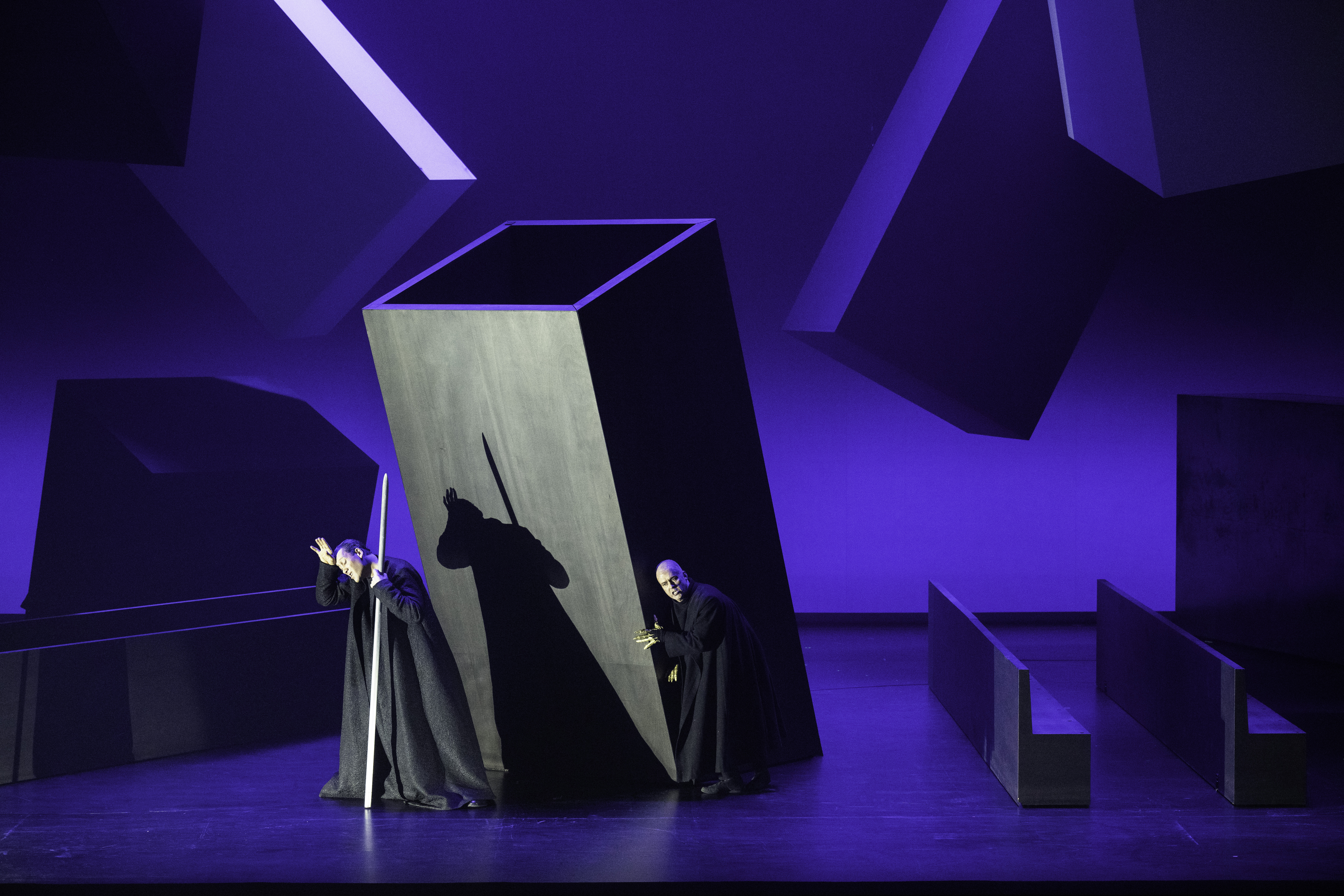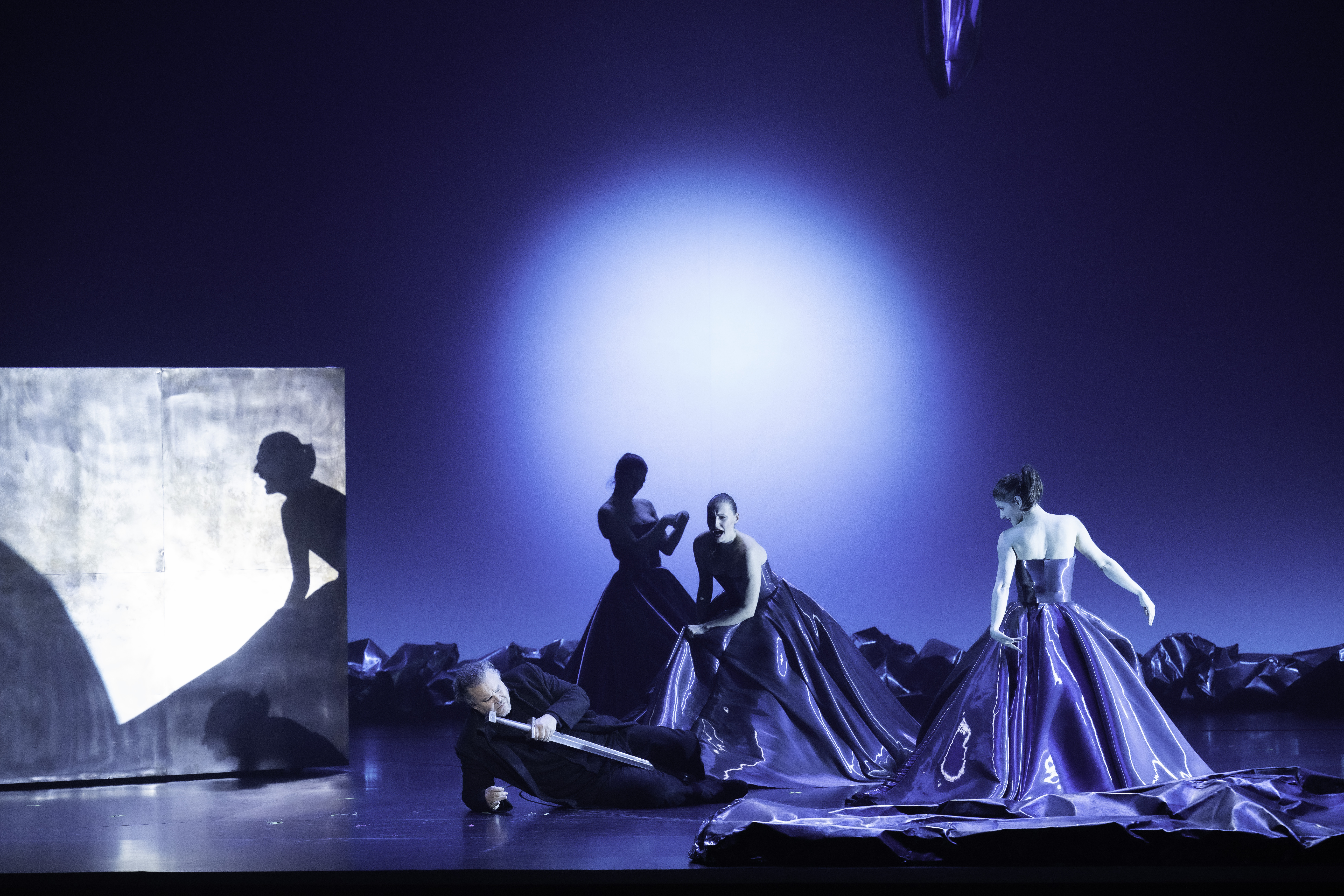Powerful lighting design, sophisticated dramaturgy, captivating sound effects: the ‘Ring’ enters the home straight at La Monnaie with Pierre Audi‘s highly illustrated ‘Götterdämmerung’. Alain Altinoglu on the podium finds the right vivid musical interpretation for the colourful illustration on stage.
Romeo Castellucci was actually supposed to have staged the entire tetralogy at the Brussels theatre, but after the premieres of ‘Rheingold’ and ‘Walküre’, the Italian director unexpectedly quit last year. Lack of finances and time were the reasons, his concept was unrealisable.

So from ‘Siegfried’ onwards, a short-term replacement was found in Pierre Audi. Known for his Wagner interpretations at other theatres such as Amsterdam, the director of the festival in Aix-en-Provence has now succeeded in concluding the Brussels ‘Ring’ with a compatible interpretation of ‘Götterdämmerung’.
Appealing as a solitary work, but with no particular and clearly emphasised statement, this new production presents itself as compatible with the rest of the Ring. Valerio Tiberi‘s powerful lighting design, which illuminates Michael Simon‘s stage with its steles and squares in a detailed, precise and variable manner, is sophisticated, colourful and powerful, but also somewhat arbitrary and general in its interpretation, which suits many things. And this also applies to perhaps even changing casts, which can be easily integrated into the ongoing production.

At the beginning and end, the videos of children holding their ring visions with painted dragons, knights and ravens up to the camera prove to be the strongest directorial moment. Dressed up in the outfits of the Ring traders and projected onto the final curtain, they are hope for the future after the final world conflagration.
Gunther and Gutrune are twins who love each other. Wagner’s idea of incest in the Wälsung couple Siegmung and Sieglinde is thus continued by the director, and consequently Hagen not only kills Gunter at the end, but also his sister. These relationships are finely differentiated and cleverly played out in the character direction (dramaturgy by Klaus Bertisch, choreography by Pim Veulings).

In addition, Andrew Foster-Williams as Gunther, with his crystal-clear and differentiated bass-baritone, and Annett Fritsch as Gutrune, with her tartly focussed soprano, give a special performance of the Gibichungen, who are otherwise often less significant in terms of direction and casting.
As Siegfried, Bryan Register offers plenty of lyrical foundation and, apart from a few passages in the second act (attended performance on 15 February 2025), convinces with clear expressiveness. He is supported by Ingela Brimberg, a Brünnhilde with warm intonation, who would benefit from a little more sharpness and fury in the second act of the fury. Her final song is convincing, although a little more clarity in the text would have been desirable.

Ain Anger‘s Hagen contributes the appropriate bass malice, although the Estonian has some soft and clear vocal material at his disposal. Scott Hendricks‘ Alberich as Nosferatu vampire is not convincing this evening with his uncertain, unclear intonation. Nora Gubisch‘s mezzo, who appears as Waltraute with surreally exaggerated gestures, is equally fragile.
The choirs, under the direction of Emmanuel Trenque, are able to contribute an appropriate vigour and compactness. Alain Altinoglu’s conducting inspires in the first and third acts with virile tempi and colourful changes.The transitions and great orchestral eruptions are wonderful, full of tension and bubbling, jubilant and radiant, while the light and airy interpretation emphasises the individual motifs with nuance rather than flatness. Pathetic and heroic are out of place in this musical interpretation, although the colourful stage direction is also played out with some plasticity thanks to the elastic, pulsating music.
Lots of applause for all involved.